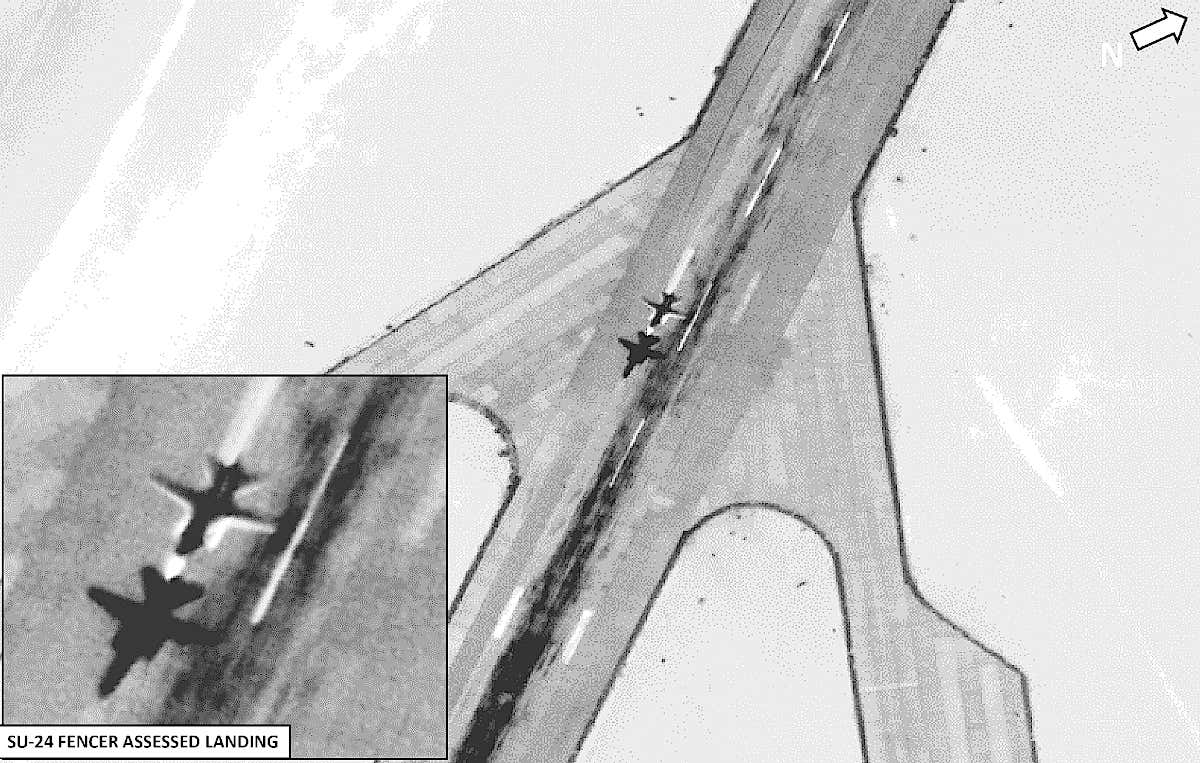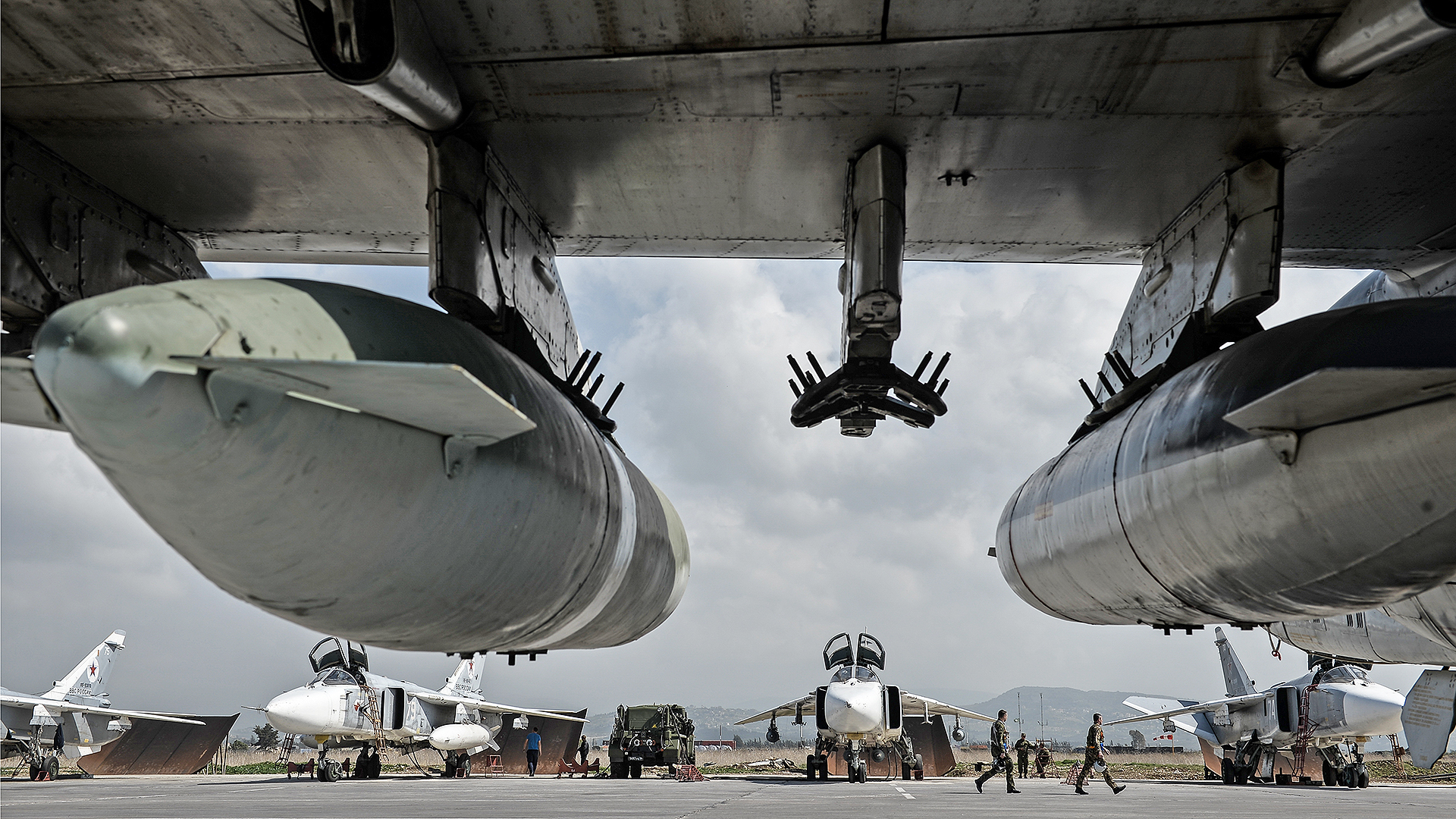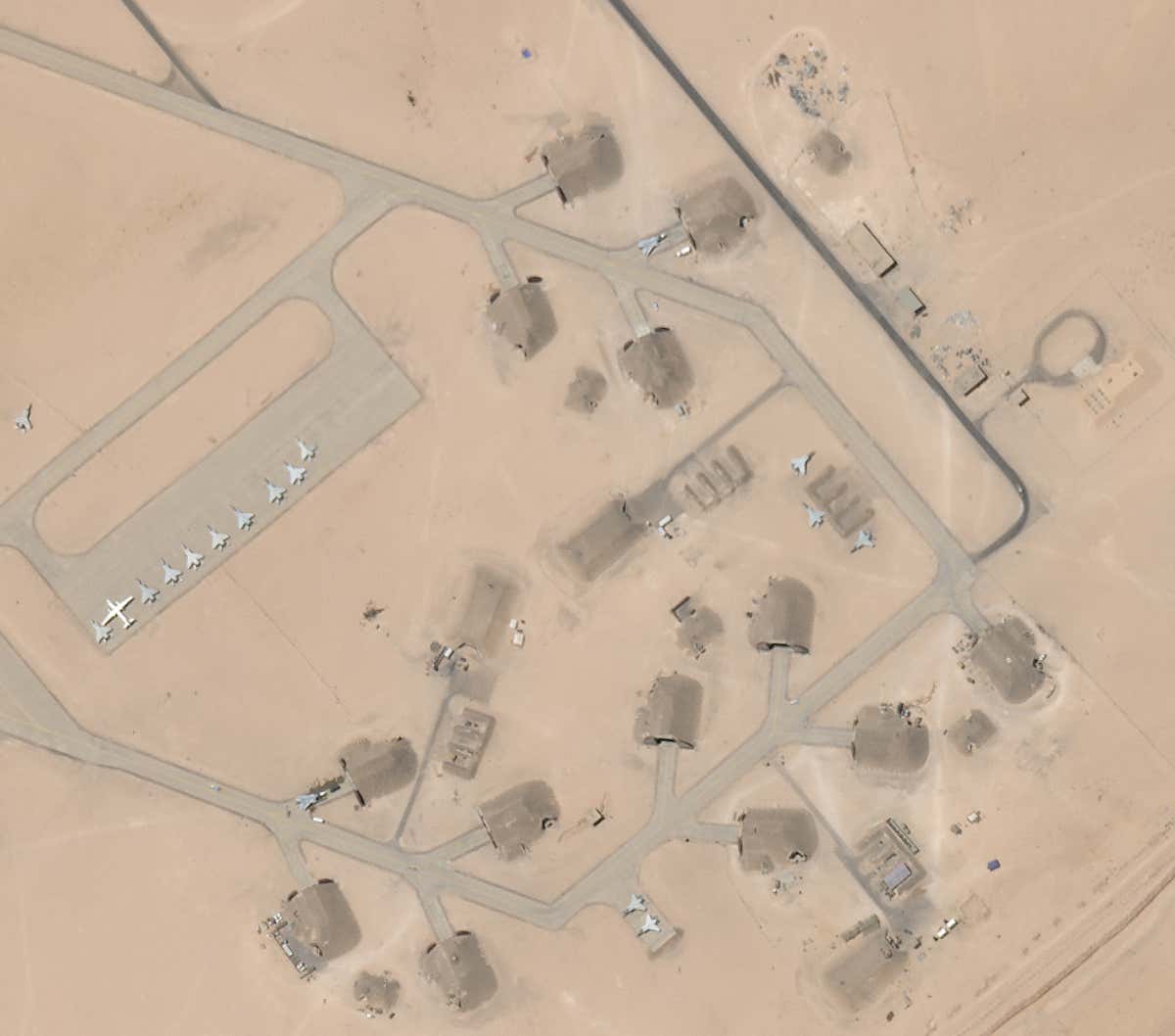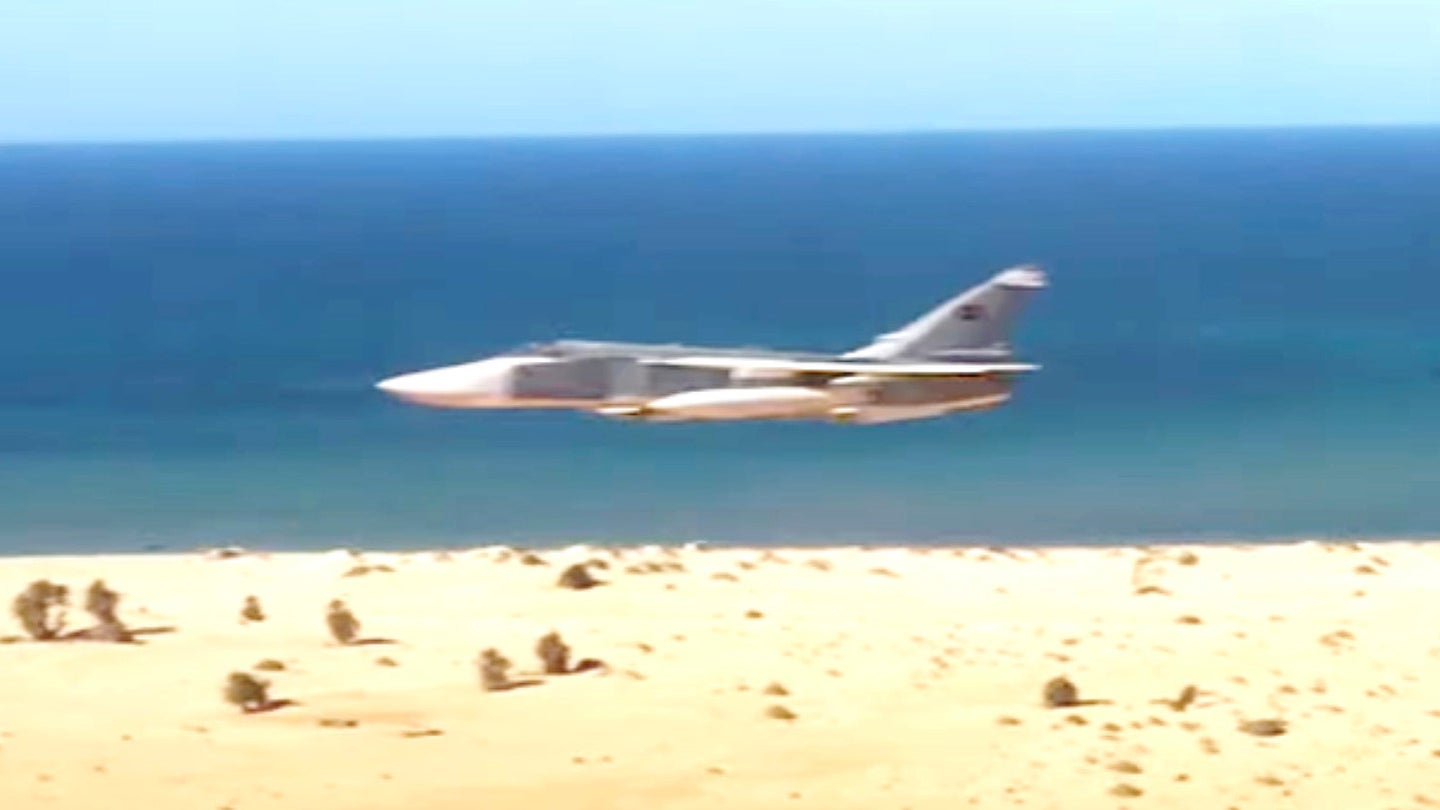Video of Russian-supplied Su-24 Fencer combat jets operating in Libya has emerged online. It was posted by the Information Office of the General Command of the Libyan Armed Forces, also known as the Libyan National Army, or LNA. U.S. Africa Command has said in the past that it believes that shadowy Russian private military contractors with direct ties to the Russian government, are flying these aircraft, which now appear to have Libyan insignias on them, as well as a small fleet of MiG-29 Fulcrum fighter jets, on behalf of the LNA. With support from Russia, among other countries, the LNA has been engaged for years now in a civil conflict with Libya’s U.N.-backed Government of National Accord, or GNA.
The clip showing the Su-24s is part of a longer video showing a live-fire exercise in the Libyan desert by the LNA’s 106th Armored Brigade. The pair of Su-24s is seen releasing infrared decoy flares as they fly low along the coastline. While the video description says that the maneuvers involved “airstrikes by warplanes,” the Fencers are not seen in the video carrying or dropping any weapons. Mi-24 Hind helicopter gunships are seen firing rockets as they accompany advancing tanks and other light vehicles.
The Fencers seen in the video still wear the typical gray and white Russian Aerospace Forces colors, rather than the camouflage that was applied to six Fencers that were delivered to Libya in 1989, or those sold to Syria. U.S. Africa Command (AFRICOM) has said that Russia supplied at least 14 combat jets in total, a mixture of Su-24s and MiG-29s, starting in May, sending them first to its Khmeimim Air Base outpost in Syria, where they had their Russian markings removed.
The only markings visible on the jets in the video, seen below, appear to be Libyan ones. The Fencers appear in the footage at around the 2:10 mark in the runtime.

It’s unclear how many Su-24s the LNA has operational now. AFRICOM has assessed that at least two of the MiG-29s have been lost in crashes.
Satellite imagery The War Zone
obtained from Planet Labs of Al Jufrah Air Base in central Libya showed two Su-24s there as of July 13. AFRICOM had previously released imagery showing a Fencer landing at this base on June 18. Another image indicated there might have been as many as four of these jets at Al Khadim Air Base in eastern Libya in late May and early June. The exact disposition of the complete fleet of Su-24s and the MiG-29s remains unclear.


Exactly how, where, and when the Russian jets had arrived in Libya was initially unclear, but satellite imagery obtained by The War Zone showed that six MiG-29s and five Su-24 Fencers were at Russia’s Khmeimim Air Base in western Syria on May 18, 2020, just days before the same jets were spotted in Libya. In another high-resolution image of that base taken on May 25, the aircraft were gone. As already noted, AFRICOM subsequently confirmed that the jets had stopped in Khmeimim before heading to the north African country.

Photos of the MiG-29s at Khmeimim had also previously emerged on social media showing at least one unmarked Fulcrum, supporting AFRICOM’s assertion that the Russian national insignia had been painted over after their arrival at that base. This was likely the case for the Su-24s, too, which now appear to have received Libyan markings sometime after they reached their final destination.
As for who was flying these jets in the new LNA video, the U.S. government has consistently maintained that all of the Russian-supplied aircraft, both MiGs and Sukhois, are being operated by Russian mercenaries from the Wagner Group. Wagner is at least closely tied to Russia’s Main Directorate military intelligence agency, also commonly referred to by the Russian acronym GRU.

The jets had first arrived in Libya at a time when the LNA, which has its main hub in Tobruk and receives support from the United Arab Emirates and Egypt, as well as Russia, had seen its latest offensive against the GNA, which operates out of the country’s internationally recognized capital in Tripoli, turned into a rout. This was in no small part thanks to increasing support for the GNA from Turkey, which included deliveries of armed Bayraktar TB2 drones.
TB2s had already proven themselves instrumental in protecting Turkish interests in northwestern Syria during a relatively brief skirmish with Russian-backed forces aligned with the regime of Syrian dictator Bashar Al Assad. More recently, TB2s, among other unmanned aircraft, were a critical factor in Azerbaijan’s defeat of Armenian and Armenian-backed forces in the disputed Nagorno-Karabakh region.
In October, the LNA and the GNA agreed to a new ceasefire and have been conducting negotiations on a potential end to the conflict ever since. Earlier this month, both sides agreed on Dec. 24, 2021, as the date for a future national election.
At the same time, while we don’t know the exact operational state of the LNA’s fleet of Russian-supplied combat jets, this new video footage shows that at least two Su-24s are still airworthy and that the group has significant other military assets that it could throw back into battle against the GNA if the current peace talks were to fail.
Contact the author: thomas@thedrive.com
